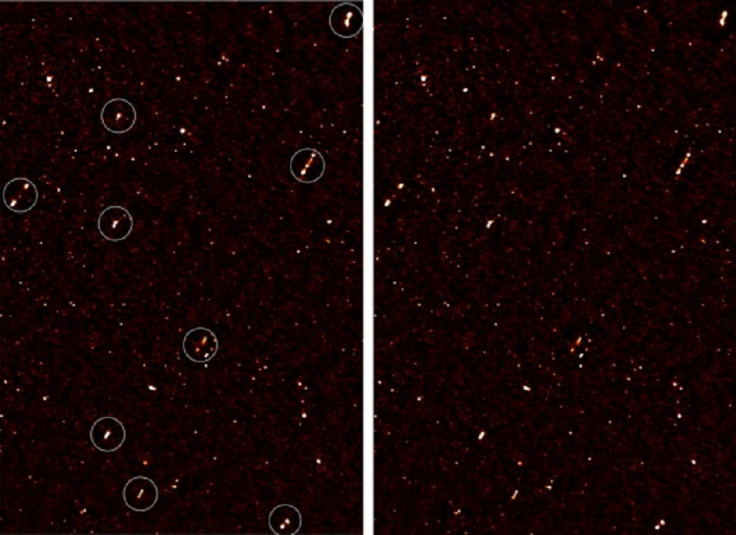'Bizarre' supermassive black holes found in mysterious alignment

Supermassive black holes in a "mysterious" alignment have been discovered by astronomers. A team of scientists from the University of Cape Town and University of the Western Cape in South Africa noticed the black holes by accident while looking for faint radio sources in the distant universe.
Instead, the team saw a group of supermassive black holes all facing in the same direction. An image highlighting the black holes shows there are at least nine. Such a phenomenon has never been seen before. Findings were published in the Monthly Notices of the Royal Astronomical Society.
The black holes observed are found at the centres of galaxies in the ELAIS-N1 region of space. All were spinning out radio jets (produced by the black holes) in the same direction – this spin direction is the only way for this "bizarre" alignment to occur.
"Since these black holes don't know about each other, or have any way of exchanging information or influencing each other directly over such vast scales, this spin alignment must have occurred during the formation of the galaxies in the early universe," said Andrew Russ Taylor, principal author on the study.
Bizarre finding
This suggests there must be something specific about the structure of the region of space where these black holes are found, and that this must have something to do with the structure of the universe. Scientists think the galaxies came from the same region of space just after the Big Bang, but moved apart over the last 13.8 billion years.
Researchers now hope to work out whatis caused or is causing the black holes to align – large-scale spin distribution has not been predicted before and researchers will need to account for them in theories about the universe's origins.
A number of ideas about what could have caused the alignment have been proposed. These include magnetic fields, exotic particles and cosmic strings. Cosmologist Romeel Dave, from University of the Western Cape, who was not involved in the study, said: "This is not obviously expected based on our current understanding of cosmology. It's a bizarre finding."
Taylor added: "We're beginning to understand how the large-scale structure of the universe came about, starting from the Big Bang and growing as a result of disturbances in the early universe, to what we have today, and that helps us explore what the universe of tomorrow will be like."
© Copyright IBTimes 2025. All rights reserved.






















